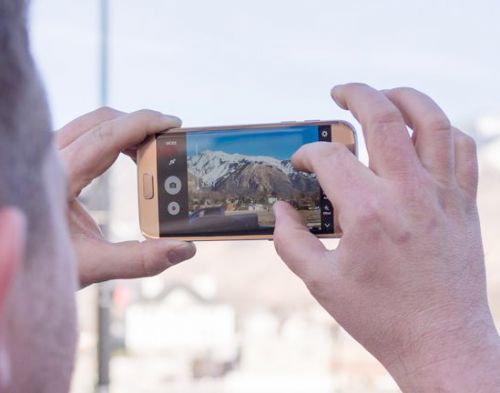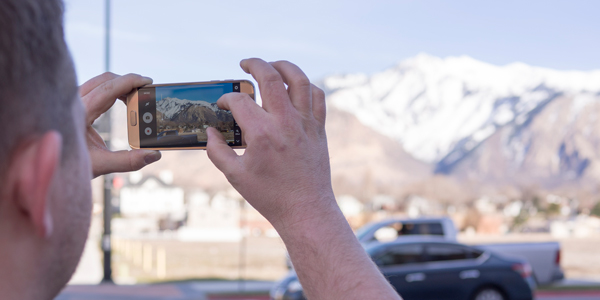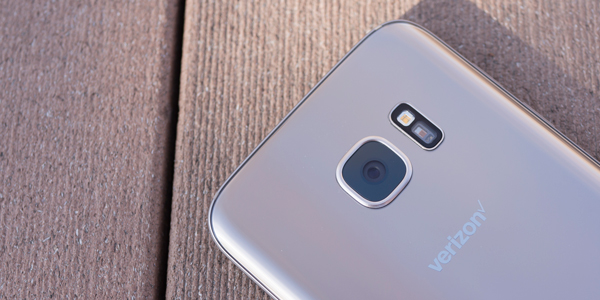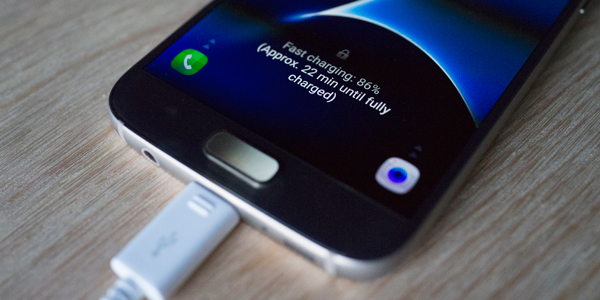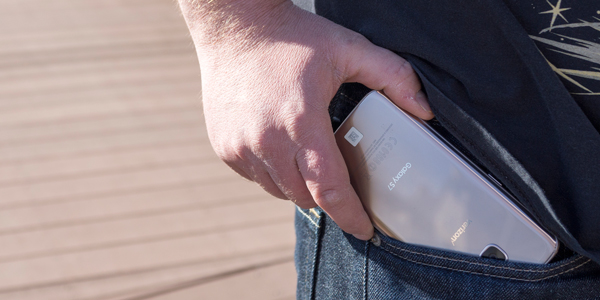Top Ten Reviews Verdict
The Galaxy S7 takes a great thing and makes it even better. It may be pricey, but it’s the most capable smartphone you can buy.
Pros
- +
Samsung's new Dual Pixel autofocus is shockingly fast and brings smartphone cameras a leap closer to DSLRs.
Cons
- -
For some reason, the world’s premier Android device is still anchored to TouchWiz and carrier bloatware.
Why you can trust Top Ten Reviews

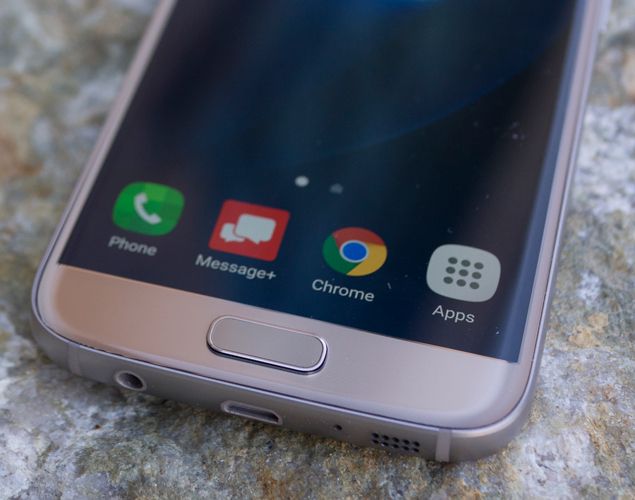
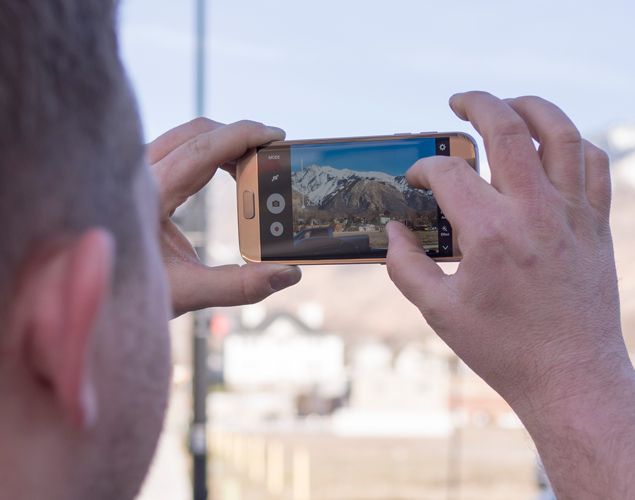
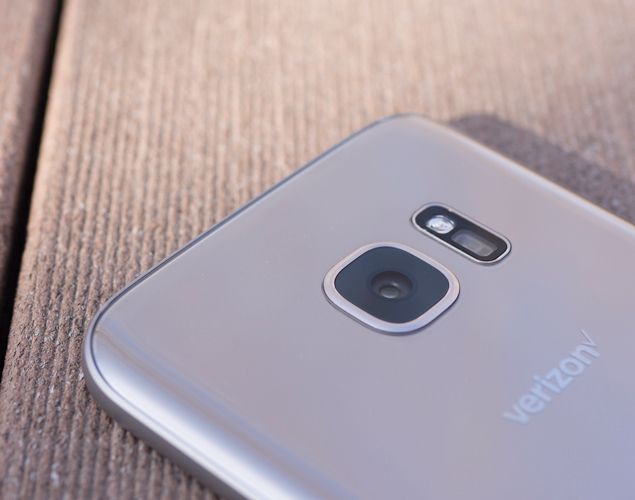
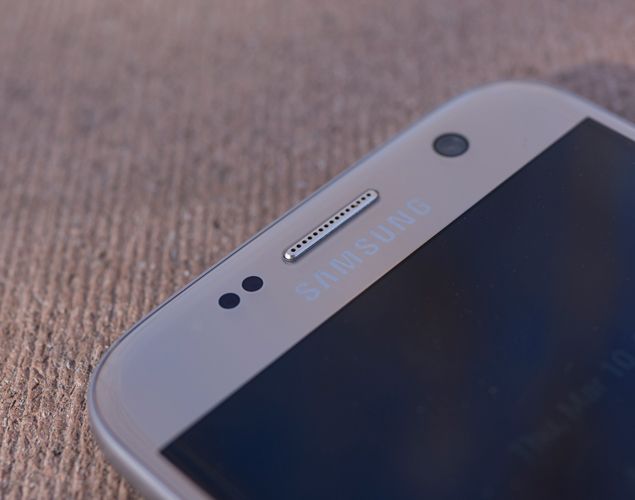

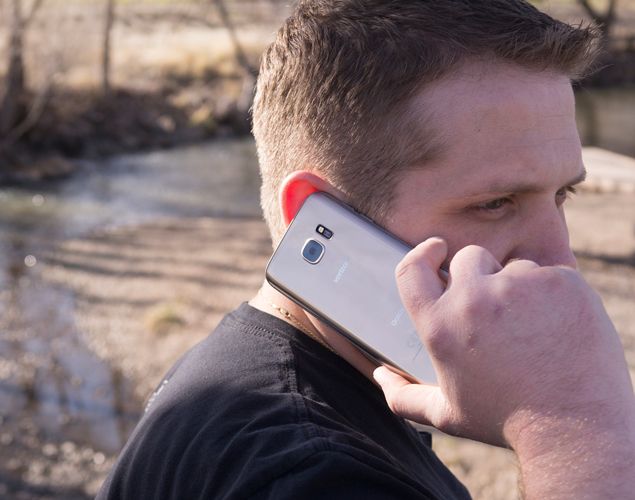

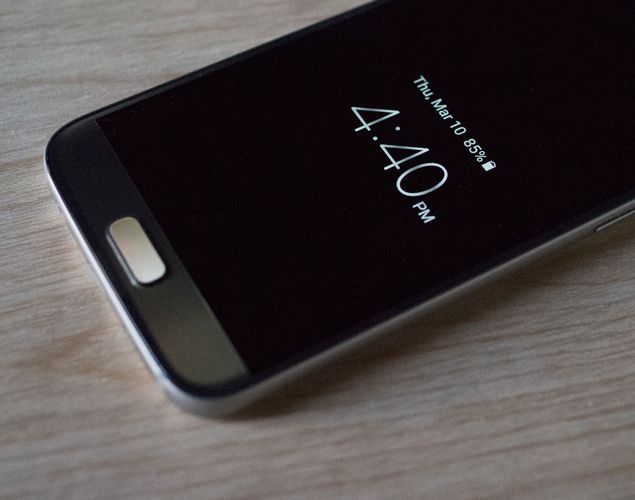

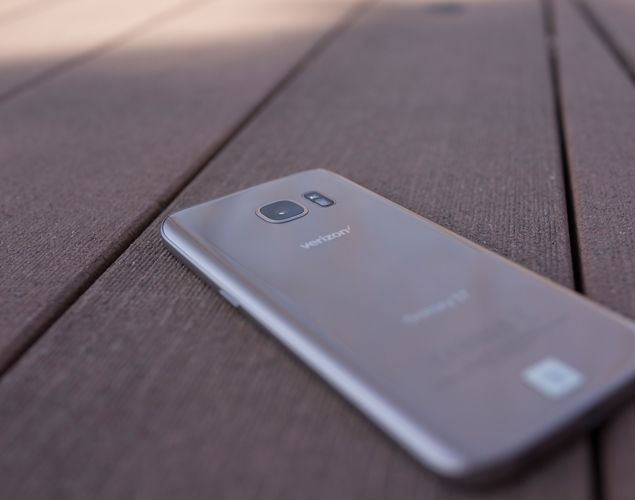
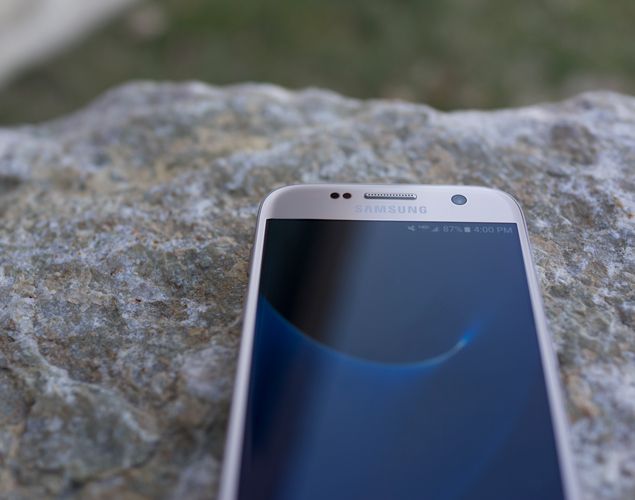
Editor’s Note: This product has been removed from our side-by-side comparison because it has been discontinued. You can still read our original review below, but Top Ten Reviews is no longer updating this product’s information.
When it was released, the Galaxy S7 was the best smartphone Samsung has ever made. It has been surpassed, of course, by the Galaxy S8. It’s delightfully snappy, unabashedly sleek and boasts a superb camera. It’s water resistant and crafted from the finest materials. And after a noticeable absence from the Galaxy line, its microSD card slot has made a triumphant return. This truly is an amazing device.
That’s not much of a surprise, though. We’re talking about the new flagship smartphone from the biggest smartphone manufacturer in the world – of course it’s going to be amazing. It’s also an extremely expensive phone with great competitors like the Moto X Pure and Nexus 6P that cost hundreds less. We can’t help but ask, “Is it worth it?”
If you’re a Samsung fan? Without question. If you’re not, there’s just enough here to give your wallet a moment of pause. The Galaxy S7 deserves your full consideration, but thanks to a couple persistent issues, its price tag could be a little hard to swallow.
Refinement was the watchword of Samsung’s approach this time around, taking the success it met in the Galaxy S6 and building on it with attentive care. The Galaxy S7 is a little prouder than its predecessor, a little bolder and fuller. Samsung stayed away from plastic parts, doubling down on their metal-and-glass construction process. The phone’s rim is all soft metal and graceful curves, while its glass front and back lounge warmly in your fingers. Oddly, the lack of sharp edges is almost a downside; more than one person we handed the phone to thought it was made of plastic, thanks to its rounded, slippery feel.
It’s definitely glass, though; the ever-present smudges are a testament to that. Samsung’s insistence on sticking to a glass back sets the Galaxy line apart from its competition, but it attracts fingerprints with apparent desperation. We know we’re nitpicking, but it’s a constant eyesore on an otherwise gorgeous phone.
The S7’s camera bump isn’t as pronounced as last year’s model, though that has more to do with the phone’s increased thickness than anything else. Its fingerprint-scanning home button is likewise a bit flusher than in previous years. Both are welcome changes that only add to the phone’s svelte appearance.
Sign up to receive the latest news, reviews, buying guides and deals direct to your inbox
Software
We’ve never been fans of the tweaks companies insist on making to stock Android. They usually come prepackaged with a lot of bloatware. Historically, Samsung’s TouchWiz was one of the worst offenders, filled with features you probably don’t use and stuffed with inferior apps. That’s not always the case – Samsung’s camera app, for example, is rather wonderful, unobtrusive yet filled with great controls. Still, the S7’s setup process is full of bloatware requests.
Fortunately, it’s not all bad. Samsung has actually integrated some solid software additions, chief among them its new always-on display. Even when the phone’s screen is off, a few of the OLED display’s pixels remain active, showing you the time and basic notifications like missed calls and texts. You have to use Samsung’s included apps to get the full effect, but it’s a nifty feature nonetheless.
You’ve probably heard Samsung’s marketing arm boasting about the S7’s camera. They’re tossing around terms like Dual Pixel Technology and phase-detect autofocus while making comparisons to DSLR cameras. No surprise; the smartphone camera has become America’s favorite point-and-shoot, after all.
It’s rare for final products to live up to marketing hype, but the Galaxy S7 does. Each of its 12 million pixels has its own twin photo diodes built-in. This means every single pixel can be used to refocus the lens, which greatly cuts down on focus time. You can double-tap the home button to instantly wake the phone to camera mode, find your focus and take a picture, all within the span of about a second and a half.
It’s worth noting that while the quality of the pictures the S7 takes has improved, they’re not that much better than those taken by the S6. The phone’s sensor is now just 12 megapixels, but thanks to an ƒ/1.7 aperture, it can handle low-light photography with far less distortion. Samsung’s ever-improving image processing nets some gorgeous photos, and of course, you can shoot video up to 4K resolution or in lower resolutions up to 240fps.
At Top Ten Reviews, we put every smartphone we review through at least 50 separate benchmarks, gathering over 300 individual data points. This time around, we nearly doubled our usual number of tests, and it was all to learn one thing: The Samsung Galaxy S7 is the fastest, most capable smartphone we’ve ever held. (That is, at least, until we held the iPhone X, iPhone 8 Plus, iPhone 8 and even the Galaxy S8.)
That’s to be expected, considering the phone comes packing Qualcomm’s latest Snapdragon 820 processor and 4GB of RAM. We’ve listed a handful of our test results in the benchmark graph at the top of this page so you can see for yourself the numbers it’s capable of pushing around. Benchmarks aren’t everything, though, and there’s no substitute for pure experience; in ours, we never hit a single hiccup. The only other phone to come close was Apple’s iPhone 6s.
On the storage side, the Galaxy S7 is available in both 32GB and 64GB setups. There’s no 128GB option, but never fear; the microSD card slot, absent from last year’s Galaxy, has returned, and it can accept expansion cards up to 200GB in size. That’s more than enough storage for all your photo-, video-, music- and app-downloading needs.
We mentioned earlier that the Galaxy S7 is slightly thicker than the S6. The difference isn’t extreme – just .04 inch, in fact – but it gave Samsung enough room to pack in a significantly larger, 3000mAh battery. With an extra 450mAh of juice, you’d expect a relative increase in the life of the phone, but the S7 only lasted a few more minutes than the S6 in our battery test.
Given that a larger battery means a longer charge time, even with Qualcomm’s rapid charging feature, the overall battery experience with the S7 has diminished. If you like, you can disable the always-on display in Samsung’s settings menu. It doesn’t squeeze that much more life out of the device, but it helps.
When we first saw the Galaxy S7 at last month’s Mobile World Congress, we were surprised to note that, unlike the direction Google took with its Nexus phones, the S7 stuck with micro-USB instead of using USB Type-C. During the show, we asked Shoneel Kolhatkar, Samsung’s Senior Director of Product Marketing, why Type-C wasn’t included. The answer: Samsung wants to maintain backwards-compatibility with the Gear VR ecosystem.
A free Gear VR came bundled with every S7 preorder Samsung received, and the company hasn’t been shy about touting the headset whenever it can. Maintaining compatibility with it makes a lot of sense, but nonreversible plugs are showing their age. With all of Type-C’s other benefits – throughput, bi-directional charging and so on – Samsung’s bound to make the jump eventually.
The last big feature the S7 boasts is its IP68 rating; the phone is dust-tight and water resistant up to 1.5 meters for 30 minutes. Practically speaking, you can spill your drink on the phone, drop it in the sink, take it out in the rain or rescue it from a toilet without worry. We’d even venture to say you could bring it into the bath, but don’t leave it under hot water for too long – some watertight seals don’t like warmer temperatures.
Refined, comfortable, speedy, waterproof, expandable and insanely quick to snap photos – the Samsung Galaxy S7 is the highest tier of top-tier smartphone you can buy. It’s also a fingerprint magnet, comes with its fair share of bloatware and costs $200 - $300 more than some very capable Android competitors. For all its advances and great inclusions, is the phone actually worth it?
If you crave the best of the best and don’t mind a few smudges, absolutely. There’s something tangibly exciting about having the finest tech on the block, and harbor no illusions, the Samsung Galaxy S7 is it.
Contributing Reviewer: Jeph Preece
Rebecca has been writing about technology since 2015. She specializes in smartphones, phone plans, DNA tests and home networking equipment. She has a bachelors degree in creative writing and English literature from the University of Evansville. Rebecca currently works as the co-founder of All Times Are Local, a foster care organization.
